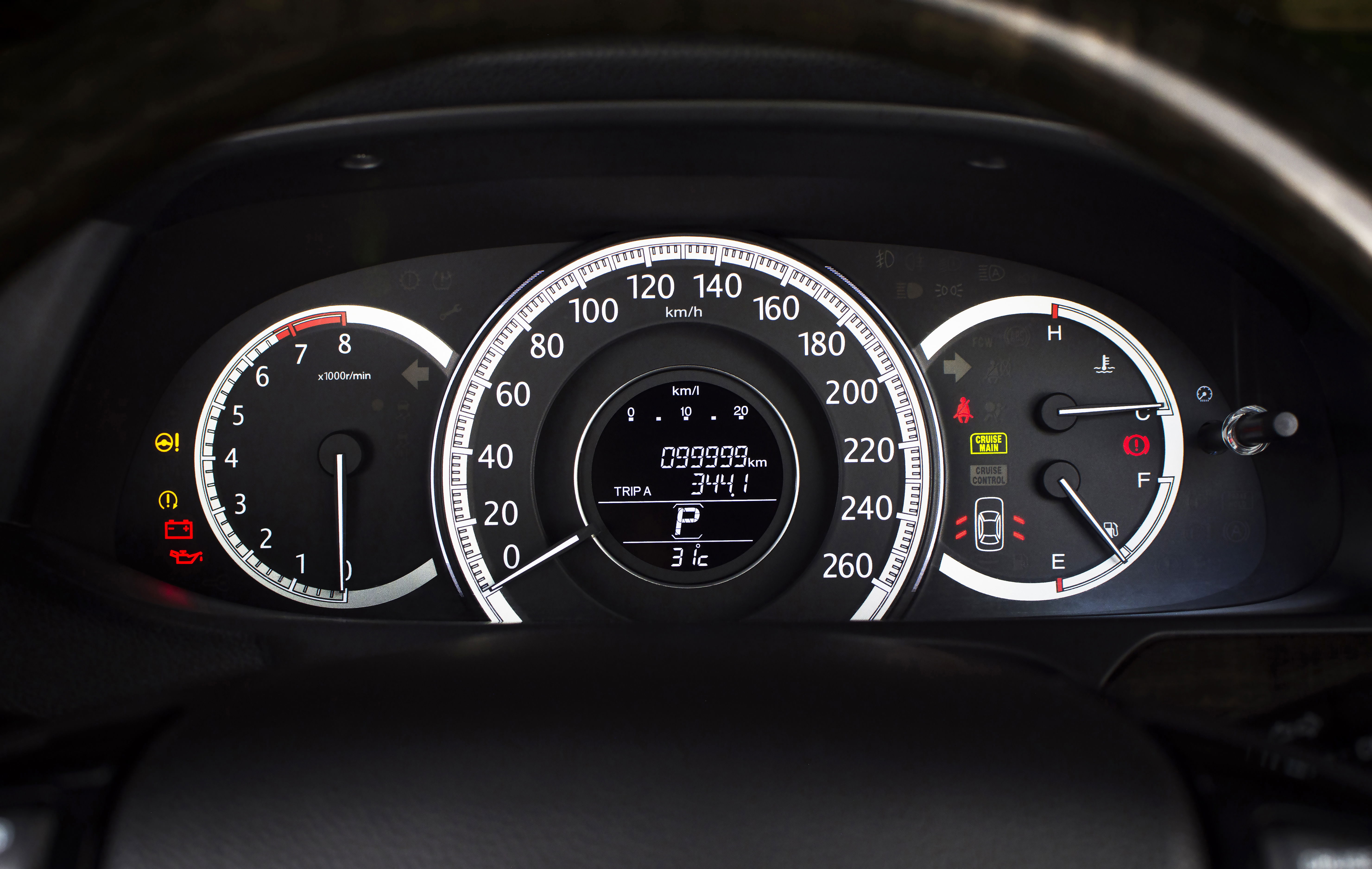Understanding the financial aspects of asset depreciation is crucial. Especially when it comes to insurance claims and asset valuation.
Enter the insurance depreciation calculator.
This tool is designed to calculate the depreciation of cars and other assets for insurance purposes. It's a vital component in determining the payout you receive from an insurance claim.
But how does it work?
This guide will delve into the intricacies of insurance depreciation calculators. We'll explore their importance, how they function, and their role in various insurance scenarios.
Whether you're a car owner, an insurance professional, or just interested in the financial side of things, this guide is for you. Let's demystify the world of insurance depreciation calculators together.
See also:
Why Do Mercedes Depreciate So Much?
What is an Insurance Depreciation Calculator?

Photo Credit: Getty.
An insurance depreciation calculator is a tool used to assess the value loss of an asset over time. This calculator helps figure out how much an asset, like a car, depreciates each year. It plays a critical role in insurance. The calculated depreciation impacts the insurance payouts you might receive after a loss.
Understanding depreciation is essential for accurate insurance claims. It ensures that you or the insurer do not overestimate or underestimate the asset's value. These calculators provide a clear picture of an asset’s depreciated worth. This helps in making informed insurance and financial decisions.
Why Calculating Depreciation Matters for Insurance Claims

Photo Credit: Getty.
Depreciation affects the value of assets over time. For insurance purposes, this is crucial. When filing a claim, knowing the depreciated value is important. It ensures fair settlement amounts. Insurers use depreciation to adjust payouts. This reflects current market value and conditions. Here’s why accurate depreciation matters:
- Ensures you don't overpay premiums.
- Helps receive fair claim payouts.
- Affects policy renewal and coverage terms.
Understanding depreciation helps manage expectations during claims. It also helps negotiate with insurance providers effectively.
How Depreciation Affects Your Insurance Payouts

Photo Credit: Getty.
Depreciation directly impacts the cash you receive from insurance claims. It determines the value deducted from original prices. When assets depreciate, insurers pay less. The payout reflects the decreased value, not the initial purchase cost.
Policies often cover actual cash value, incorporating depreciation. Replacement cost value, though higher, rarely includes depreciation. Knowing how depreciation works helps anticipate potential claim results. It prevents surprises and aids in planning for asset replacements. Understanding this process ensures better decision-making during insurance claims.
Step-by-Step Guide to Using an Insurance Depreciation Calculator

Photo Credit: Getty.
Using an insurance depreciation calculator is simpler than it seems. Begin by gathering all necessary information about your asset. You need details like the purchase price and age of the asset. Other factors such as make, model, and condition are crucial too. Open an online depreciation calculator for easy access and accuracy. Input the data into the calculator fields as prompted. Follow these simple steps:
- Enter the purchase price and date.
- Select the depreciation method (e.g., straight-line).
- Input any modifications or upgrades.
- Adjust for mileage if using for a vehicle.
- Hit calculate for results.
Review the displayed depreciation values carefully. The results estimate the current asset value after depreciation. Understand that different calculators might require slightly varied inputs. However, they all aim to accurately determine asset depreciation. Finally, using these values helps in effective claim filing. It ensures you have realistic expectations about insurance payouts.
Factors Influencing the Rate of Depreciation

Photo Credit: Getty.
Several factors affect how quickly an asset loses value. The age of the asset plays a major role in its depreciation rate. Newer items typically depreciate faster initially. Over time, the rate often stabilizes or slows down.
Condition is another significant factor. Well-maintained assets tend to depreciate at a slower rate than those that are not. External factors, such as market trends, also influence depreciation. Economic conditions or new model releases can affect an asset's value.
Additionally, the make and model of a vehicle can impact its depreciation. Luxury brands may hold their value better than others.
Different Depreciation Methods: Straight-Line vs. Accelerated

Photo Credit: Getty.
Understanding depreciation methods is crucial for accurate calculations. Two common approaches are straight-line and accelerated depreciation. Straight-line depreciation is the simplest method. It spreads the asset's cost evenly over its useful life.
Accelerated depreciation, on the other hand, allows for larger deductions earlier. This method can benefit tax strategies by reducing taxable income sooner. Choosing between these methods depends on financial goals.
Straight-line provides predictability, while accelerated offers immediate tax advantages. Each method has its place in depreciation calculations. Careful consideration of financial implications is necessary when selecting a method.
See also:
Understanding Car Depreciation: A Comprehensive Guide
Calculating Annual Depreciation for Vehicles

Photo Credit: Getty.
Annual depreciation calculation for vehicles is essential for tracking value loss. This involves evaluating how a vehicle's worth declines over a year. The process begins with knowing the vehicle's initial purchase price.
Next, estimate the car's residual value after a specific period, usually one year. Subtract the estimated residual value from the original purchase price. This difference gives you the annual depreciation amount.
Regularly assessing annual depreciation helps manage car value for resale or insurance claims. Being aware of a vehicle's depreciation supports better financial planning and decision-making.
The Impact of Mileage on Car Depreciation

Photo Credit: Getty.
Mileage significantly influences car depreciation. The more you drive, the quicker your car loses value. High mileage often suggests wear and tear. This affects a vehicle's resale price and insurance value negatively. When calculating depreciation, mileage is a key factor. It’s crucial for obtaining accurate insurance estimates.
Here are factors to consider regarding mileage:
- Annual Mileage: More annual miles increase depreciation.
- Vehicle Make and Model: Different brands handle mileage differently.
- Maintenance History: Well-maintained high-mileage cars can retain value.
Understanding these factors ensures precise depreciation estimates for informed financial choices.
Estimating Future Car Value with Calculators

Photo Credit: Getty.
Estimating a car's future value can be complex. A future car value calculator simplifies this process. These calculators consider various inputs. Factors like age, mileage, and car condition play a big role. Market trends also influence future value.
Keep these in mind when using calculators. Accurate predictions aid in financial decisions. Knowing future value helps with selling or trading vehicles.
Case Studies: Real-Life Examples of Depreciation Calculations

Photo Credit: Getty.
Imagine buying a new car. You drive it for five years. Over time, depreciation reduces its value significantly. Consider a luxury car like a Lexus. Depreciation calculators show how quickly its value falls. This impacts resale decisions. In another scenario, a business evaluates its fleet using calculators. Depreciation insights guide leasing or buying options.
Here are two examples of how automobile depreciation can be calculated in real life:
Example 1: Straight-Line Depreciation
Scenario: You purchase a new car for $30,000. The car's estimated useful life is 5 years, with a salvage value of $5,000 at the end of those 5 years.
Calculation:
- Cost of the car: $30,000
- Salvage value: $5,000
- Useful life: 5 years
Using the straight-line method, the annual depreciation expense is calculated as follows: Depreciation Expense = Cost of the Car – Salvage Value / Useful Life So Depreciation Expense = $30,000 – $5,000 / 5 = $5,000. So, the car depreciates by $5,000 every year.
Example 2: Declining Balance Method
Scenario: You purchase a new car for $40,000. The car's estimated useful life is 4 years, and you choose to use the double declining balance method for depreciation.
Calculation:
- Cost of the car: $40,000
- Useful life: 4 years
- Depreciation rate: 1 / Useful Life X 2 = 50%
Using the double declining balance method, the depreciation for each year is calculated as follows:
Year 1: Depreciation Expense = 40,000 \ times 0.5 = 20,000
Year 2: New Book Value = 40,000 - 20,000 = 20,000 (Depreciation Expense = 20,000 \ times 0.5 = 10,000)
Year 3: New Book Value = 20,000 - 10,000 = 10,000 (Depreciation Expense = 10,000 \ times 0.5 = 5,000)
Year 4: New Book Value = New Book Value (Year 3) - Depreciation Expense (Year 3) New Book Value = 10,000 - 5,000 = 5,000 (Depreciation Expense = 5,000 \ times 0.5 = 2,500)
So, the car depreciates at varying amounts over the years, with larger depreciation expenses in the earlier years. Each case highlights the importance of understanding depreciation.
A Final Note: The Role of Depreciation Calculators in Insurance and Asset Management

Photo Credit: Getty.
Depreciation calculators have become essential tools that help people make informed insurance and asset management decisions. These tools offer clarity and precision. Understanding depreciation is key to financial planning. It influences insurance payouts and asset value assessments. Using these calculators reduces guesswork.
Accurate depreciation calculations enhance negotiations with insurers. They also guide investment decisions and asset purchases. This ensures fair valuations in various scenarios. As technology evolves, depreciation calculators improve. They are increasingly accurate and accessible. This advancement further empowers both individuals and businesses in managing their assets wisely.